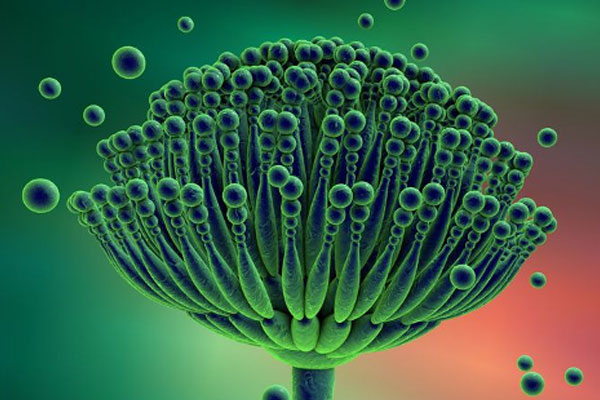Aflatoxins are considered to be potent carcinogens and teratogens to humans and farm animals. A variety of species of the fungal genus Aspergillus (mainly A. flavus and A. parasiticus) synthesize aflatoxins. Spores of these fungi are common in air and soil of agricultural areas of temperate and tropical environments. Because aflatoxigenic fungi are ubiquitous and opportunistic, aflatoxin contamination has become a food safety concern. The chief U.S. crops affected by the threat of contamination with aflatoxin include corn, peanuts, cottonseed, and certain tree nuts. Additionally, aflatoxin contamination has also become an international trade issue. Major trading partners of U.S. agricultural products have set total aflatoxin action threshold levels at four ng/g (ppb). This action level is far below the 20 ppb level recommended by the U.S. Food and Drug administration for domestic foods. Almonds, pistachios and walnuts are one of the major food commodities affected by food safety and trade issues associated with aflatoxin contamination. Commercial domestic production of these tree nuts in the U.S. is entirely in California. Moreover, 50 to 75% of domestically produced tree nuts are exported, chiefly to countries of the European Union (EU), which adhere to the four ppb action threshold level. Scientists at the USDA’s Western Regional Research Center and the University of California, Davis’ Department of Pomology and Kearney Agricultural Center have developed products and methods to reduce aflatoxin contamination of tree nuts. Control of insect pests in tree nut orchards is a major strategy to curtail aflatoxin contamination. Insect feeding damage can lead to fungal infection and concomitant aflatoxin contamination. This is especially the case with navel orangeworm on pistachio and almond. A new and potent lure has been developed to control codling moth, a major insect pest of walnuts whose feeding damage potentially leads to fungal infection. Through breeding and genetic engineering, new varieties of almonds and walnuts have been developed which are resistant to insect attack. New orchard management strategies have been prescribed to reduce reservoirs of A. flavus in tree nut orchards. A number of saprophytic yeasts, natural to tree nut orchards, have been discovered which show promise as biological control agents of A. flavus, in vitro, and are awaiting field testing. New and improved risk assessment models have been developed for sampling and measuring aflatoxin contamination through the processing stream and in bulk shipping lots of tree nuts. An automated sorter that detects and removes aflatoxin contaminated nuts from a processing stream in real time was developed. It was also concluded that methods currently used for hand‐cracking of closed shell pistachios result in a higher risk of aflatoxin contamination. Perhaps the foremost breakthrough to date, however, is that constituents of walnut seed coat, especially from the cultivar ‘Tulare’, are potent inhibitors of aflatoxin biosynthesis, capable of rendering aflatoxigenic A. flavus virtually atoxigenic.
By Bruce C. Campbell, Russell J. Molyneux and Thomas F. Schatzki

